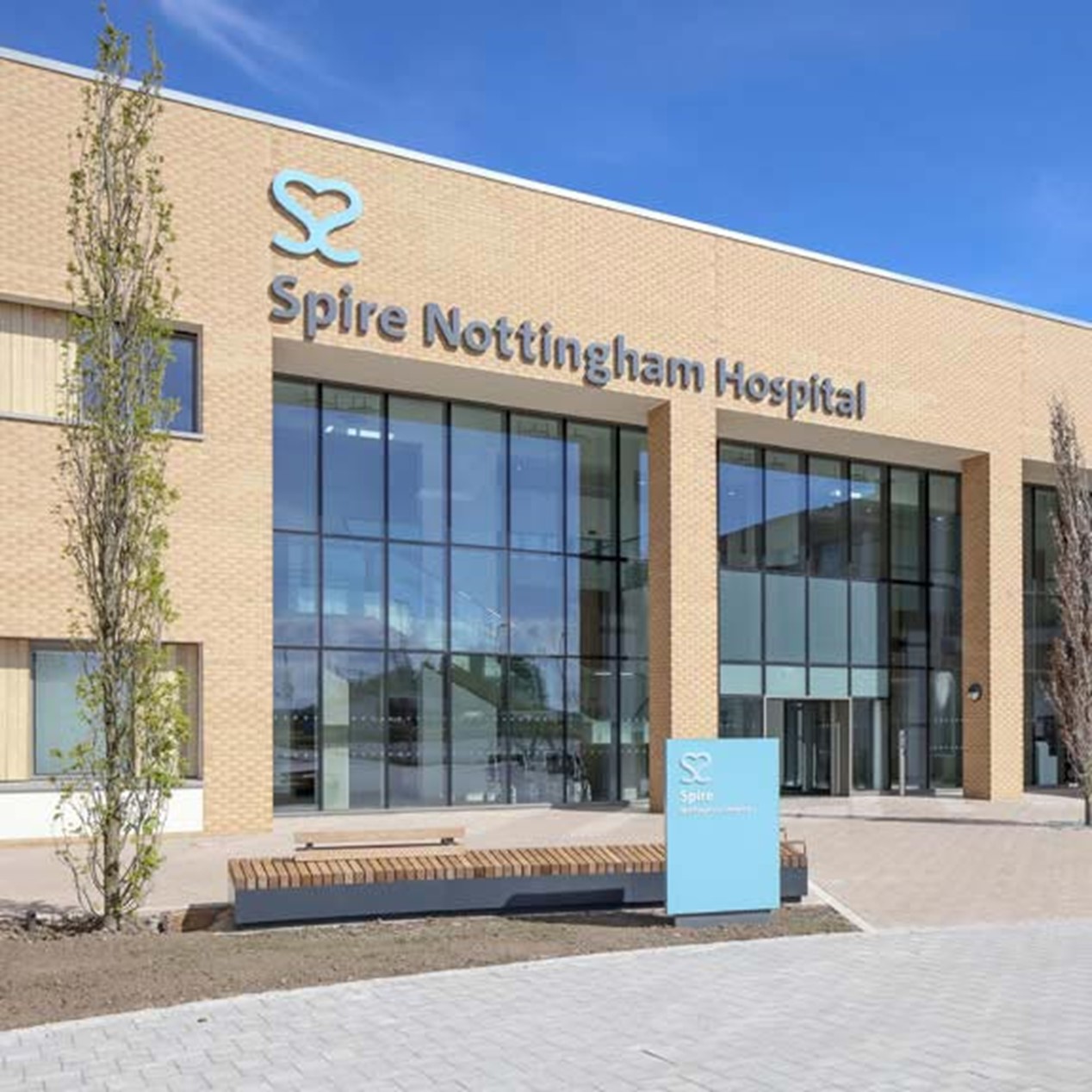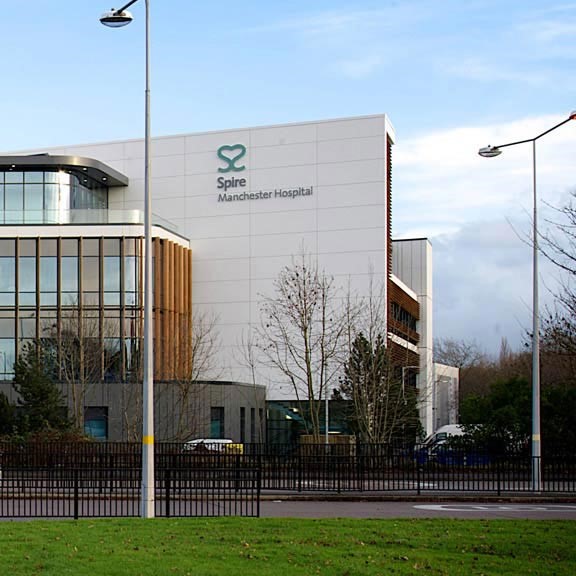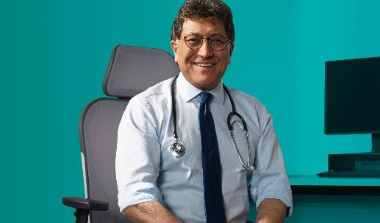A mammogram is a scan that uses low dose X-rays to examine the breast. It is used to help identify breast cancer in its early stages as it can find cancers that are too small to feel.
A referral letter from a consultant or GP is required before booking any diagnostic investigation.
Why you might need it
Breast cancer affects one in eight women in the UK, according to the charity Breast Cancer Care, with 81% of cases occurring in women over the age of 50.
A mammogram can help detect breast cancer at its early stages. Younger women may also have this test if they have found a lump, and breast cancer runs in their family.
If you decide to have your procedure with us, you will be looked after by an experienced multi-disciplinary care team.
Find a Spire hospital offering this treatment

Who will do it?
Our patients are at the heart of what we do and we want you to be in control of your care.
All of our radiographers are of the highest standard and benefit from working in our modern, well equipped hospitals.
Before your treatment
you will need a referral letter from a consultant or GP before booking any diagnostic investigation.
You will have a formal consultation with a healthcare professional. During this time you will be able to explain your medical history, symptoms and raise any concerns that you might have.
We will also discuss with you whether any further diagnostic tests, such as scans or blood tests, are needed. Any additional costs will be discussed before further tests are carried out.
Preparing for your treatment
We've tried to make your experience with us as easy and relaxed as possible.
For more information on visiting hours, our food, what to pack if you're staying with us, parking and all those other important practicalities, please visit our patient information pages.
Our dedicated team will also give you tailored advice to follow in the run up to your visit.
You will need to keep your underarms and breasts clean and clear from any lotions or anti-perspiration as it can affect the imaging. Your radiographer will give you further, tailored advice to follow in the run up to your mammogram.
The procedure
We understand that having a mammogram can potentially be a time of anxiety and worry. Our experienced and caring medical staff will be there for you, holding your hand, every step of the way.
During the procedure, your radiographer will position your breast in a mammography unit. Your breast will be placed on a special platform and compressed with a paddle. This is necessary so all the breast tissue can be X-rayed. The radiographer will then walk behind a screen and activate the machine. If you are younger and have more dense breast tissue, you may be offered an ultrasound scan.
Your doctor will be looking at the pictures as the images are shown on screen and will determine the best course of follow-up action as provided by the national diagnostic system for reading mammogram - provided by BI-RADS, or the Breast Imaging Reporting and Database System.
The system categorises lumps from zero to six and details the next course of action for each category - whether more investigations are needed such as more imagery, a biopsy or regular screening. We will discuss this with you during your appointment.
The whole procedure will take around 30 minutes.
Aftercare
As this is an outpatient procedure, you will be able to leave after your test. We take an integrated approach so we can organise any other breast care that you may need after your mammogram.
Why choose Spire?
We are committed to delivering excellent individual care and customer service across our network of hospitals, clinics and specialist care centres around the UK. Our dedicated and highly trained team aim to achieve consistently excellent results. For us it's more than just treating patients, it's about looking after people.
Important to note
The treatment described on this page may be adapted to meet your individual needs, so it's important to follow your healthcare professional's advice and raise any questions that you may have with them.
What is a mammogram?
A mammogram is a type of X-ray scan used to screen for and diagnose breast problems, including breast cancer. It's currently the most effective way to catch breast cancer early, in some cases, up to three years before a lump can be felt.
How often you have a mammogram to screen for breast cancer depends on your age and your risk factors for breast cancer.
If you feel a lump in your breast, it’s important to get it checked. Most are harmless, but they can be a sign of something more serious, such as breast cancer.
A referral letter from a consultant or GP is required before booking any diagnostic investigation.
When to get a mammogram
Regular breast screening is the most effective way to identify breast cancer early, which improves your chances of successful treatment and reduces your chances of needing to have your breast removed (mastectomy) or have chemotherapy.
In addition to attending your regular breast screening appointments, you should see your doctor if you have:
- A lump in your breast or armpit
- Any changes in your breast or armpit
- Discharge from your nipple
- Skin changes on your breast, including your nipple
Your doctor may recommend a mammogram after a physical examination of your breast.
Who has a mammogram?
In the UK, women aged 50 and over are offered regular breast screening. You'll be invited for your first breast screening between the ages of 50 and 53 and will continue to be offered regular breast screening up until your 71st birthday.
If you have a high risk of developing breast cancer, you'll be invited for breast screening before age 50.
Where to get a mammogram
Almost all of our hospitals offer private mammograms. Our fast diagnostics mean you don’t have to wait long for your results. Find your nearest Spire hospital.

How do mammogram screenings work?
A mammogram is a type of X-ray scan. A radiographer (the person who takes the images) will help place your breast between two plates on the X-ray machine. The plates are then gently but firmly compressed. X-rays are taken from different angles. This is then repeated on your other breast.
Preparing for a mammogram
Book your breast screening appointment for when your breasts are least likely to feel tender. If you haven't gone through menopause, your breasts are most likely to feel tender the week before and week of your period, so book your appointment for the week after your period.
If you know you find the procedure uncomfortable, consider taking over-the-counter pain medication.
Before your mammogram, don't use deodorant as particles of metal used in deodorant can show up on your mammogram images.
Mammogram screening procedure
Having a mammogram is often uncomfortable and in some cases, painful due to the pressure applied on your breasts. However, the procedure is over in a few minutes.
Pressure is needed to even out the thickness of your breast tissue, which allows X-rays to more easily pass through and also means less X-ray radiation is needed. Pressure also reduces the movement of your breast tissue so clearer images can be taken. When the images are being taken, you'll be asked to stand still and hold your breath.
Each of your breasts will have X-ray images taken from the top view and side view. The X-ray images are black and white, and will be sent to a computer screen so a doctor who specialises in interpreting X-rays (a radiologist) can examine them. They will look for signs of breast cancer or other breast conditions.
If you're younger and have more dense breast tissue, you may be offered an ultrasound scan.
After a mammogram
After your mammogram, you may have to wait for the radiographer to check the image quality. If the images aren't clear, you may need to repeat part or all of your mammogram. Once your radiographer confirms that the images are of good enough quality, you can go home and continue with your usual activities.
How long does a mammogram take?
A mammogram takes only a few minutes to perform but your entire appointment may take around 30 minutes. However, you may spend longer in hospital depending on:
- How long you need to wait in the waiting room
- How long it takes you to complete your pre-mammogram questionnaire
- How long it takes you to undress before your mammogram and redress afterwards
- How long it takes the radiographer to position your breasts
- Whether you need to have part of your mammogram repeated if the images aren’t clear enough
Mammogram results
Your radiologist will look for signs of breast cancer or other breast conditions and will send the results to the doctor who requested the mammogram. They may be able to explain your mammogram results to you on the same day as your scan.
If there was anything abnormal spotted on the X-ray images, then you may need further tests, such as a biopsy (where a small tissue sample is taken) for further investigation in our laboratory. This can take a few days but we try to get your results back to you as soon as possible as less waiting means less worrying.
We take an integrated approach so if anything is found during the investigation, we can organise any other breast care that you may need.
Risks involved with mammograms
A mammography is a relatively safe procedure. Some women find the plates uncomfortable or painful, so you may feel some discomfort in your breasts for a few days after, particularly if you had a biopsy.
Rare but possible complications related to biopsies include:
- Excessive bleeding
- Fainting
- Infection
- Unexpected reaction to the local anaesthetic
Mammography uses a very small amount of X-ray radiation — even less than a chest X-ray and less than a fifth of the background X-ray radiation you are naturally exposed to in a single year. The risk of harm is therefore very low. However, repeated exposure does carry a very small risk of causing cancer. For most women, the benefits of regular breast screening is greater than the risks posed by exposure to low levels of X-ray radiation.
At Spire Healthcare, we’re careful to weigh up the benefits and risks of any X-ray and discuss it with you if you have any concerns.
Frequently asked questions
Should I worry about a mammogram callback?
If you get a callback after your mammogram, this doesn’t necessarily mean you have cancer. There are several other conditions that can cause changes in your breasts. A callback gives your healthcare team a chance to carry out further tests or take more images to get a clearer picture of your breast tissue. This will help them give you a clear diagnosis so you can get treatment, if needed.
What can show up on a mammogram?
Mammograms are the most effective way to detect the early stages of breast cancer. They can pick up changes in your breast tissue including calcifications (small white spots) that may or may not be caused by cancer and dense masses of tissue that are different to healthy breast tissue, which may be caused by cancer or non-cancerous conditions such as cysts and fibroadenomas.
The treatment described on this page may be adapted to meet your individual needs, so it's important to follow your healthcare professional's advice and raise any questions that you may have with them.
Get in touch
Sources
https://assets.publishing.service.gov.uk/government/uploads/system/uploads/attachment_data/file/669133/Incomplete_or_partial_mammography_leaflet.pdf
https://patient.info/health/breast-cancer-leaflet
https://www.mayoclinic.org/tests-procedures/mammogram/about/pac-20384806
https://www.cdc.gov/cancer/breast/basic_info/mammograms.htm
https://www.healthline.com/health/how-long-does-a-mammogram-take#how-long-does-it-take
https://www.nhs.uk/conditions/breast-cancer-screening/
https://www.cancerresearchuk.org/about-cancer/breast-cancer/getting-diagnosed/screening/mammogram
https://www.cancer.org/latest-news/if-youre-called-back-after-a-mammogram.html

